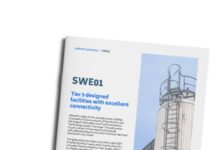InsightaaS: Long time industry analyst and current research VP, datacenter technologies (DCT) & eco-efficient IT for 451 Research, Andy Lawrence considers the sources of ambivalence in the data centre sector as the community considers prospects for 2015/16 in the research report below. Based on this year’s installment of ongoing 451 research into data centre technology trends, Lawrence finds ample justification for optimism in strong demand for datacenter capacity, but also shades of uncertainty in the laggard development of cloud, and in a group of technologies, which together could “upset demand patterns.” Lawrence finds the data centre market at a crossroad, ripe for disruption by new business models and technology innovation – and IoT in particular, which is likely to increase processing at the centre (in large facilities), and at the edge (local processing). The question becomes, in his view, what will happen “in the middle”?
This is a good question indeed, as 451’s study of data centre trends for the coming year focuses on technologies that are most likely found in the large operation or service provider facility (advanced DCIM, integration of renewable energy, investment in cooling innovation or the de-emphasis of local resiliency in favour of cloud/networking capacity) or that serve edge computing requirements (or PFM or micro-modular builds). Will the advance of cloud disintermediate the middle, pushing more demand to the hyperscale centres as has been predicted in the past, or will the middle ground, enterprise facility follow a different path, mimicking the technology deployments and the operational behaviours of the hyperscale leaders when possible? Still cloudy on a considerable segment of the market.

These are interesting times for suppliers of equipment, software and services to the datacenter community. As executives and investors of the 150-plus companies operating in this sector look forward into 2015/16, there is a mixture of both optimism and concern – an ambivalent mood that is also equally evident across much of the commercial datacenter sector.
This is the key overview finding of the 451 Research Datacenter Technology sector report, Trends in Datacenter Technologies. The report, which focuses primarily on power, cooling, datacenter design and management systems and some IT innovations, identifies key trends in the sector, their implications and impacts, and identifies likely winning and losing technologies or strategies.
The optimism is fueled by, above all, strong demand – it is clear that demand for datacenter capacity and datacenter services will continue to grow steadily and globally. This trend is driven by the voracious growth of social networks, mobile device use, online video and the Internet of Things (IoT) as well global adoption of IT and generally benign economic conditions. But the optimism is coupled with uncertainty. Cloud computing has yet to make its full impact. But in terms of economic, business and technological impact, it looks as though it will soon prove to be every bit as revolutionary as the most evangelical proponents forecast. At the same time, a cluster of technologies, taken together, could upset demand patterns for some technologies in some markets.
The 451 Take
The datacenter industry – and the industries that supply it – are at the beginning of a period of intense disruption, as new business models and technologies (cloud, prefab modular, software-driven and software-defined datacenters, transactive energy-aware architectures), coupled with continuing innovation in processing and storage, begin to radically alter the design and economics of datacenters. The level and associated pain of this disruption will be softened for many, but certainly not for all, by the continuing build-out of demand and the evolution of the so-called ‘Internet of Everything.’ We expect there will be far more computing power in very large datacenters, and far more in edge-of-network datacenters, than in the past; it is in the middle where the picture is most complicated and unpredictable.
Key trends
Looking into 2015, 451 Research considered a wide range of technologies and possible innovations in the datacenter technology sector. In the report, we highlight five areas where, even if the near-term impact is quite low, there is a considerable activity, investment and the prospect of disruption. These are described below (and are discussed more fully in the main report):
DCIM software is being extended up the IT stack to associated applications and processes with the underlying physical resources (space, power, cooling) – 451 Research calls this converged technology Datacenter Services Optimization (DCSO). This trend, already being seen in recent product and strategy releases from key suppliers, will accelerate in 2015. This will eventually change the orientation, terminology and buying patterns of many DCIM buyers. A new generation of DCIM buyer, the business-oriented IT specialist, is joining with the engineers, creating new product requirements, supplier partnership opportunities, and possibly market entrants.
Over 2015 and beyond, 451 Research expects that the DCIM channel will become increasingly IT-centric, impacting all leading DCIM suppliers. In the short term, however, it will favor only a handful: those that have a strong reach into IT management software, with either native capabilities or via partnerships. IT management software makers may seek to add DCIM capabilities and acquire one of the many small pure-play DCIM suppliers.
PFM, the new baseline, new opportunities
Traditional brick-and-mortar datacenters have long been the established norm, while prefabricated modular (PFM) datacenters are used for specialist situations: remote sites and edge datacenters, for example. However, 451 Research expects this to flip. With the wide availability of highly efficient PFM datacenter products and more than 50 vendors globally, PFM facilities are the new starting point and the benchmark to beat for virtually all use cases, from SMBs to hyperscale operators. We also expects that demand for more IT at the edge of the network will encourage the development and adoption of micro-modular datacenters – complete mini-datacenters or next-generation server closets that perform local processing securely and with resilience.
Over 2015 and beyond, we expect that rapidly growing interest in PFM will increasingly drive datacenter design and build practice; PFM will also increasingly figure in the expectations of business leaders and financial officers for cost profile, performance and lead times. Operators are increasingly looking for architects and consultants who can navigate the PFM landscape. A growing market will attract further entrants, especially at the lower end, and converged IT/facilities designs.
The move to transactive, renewable energy will begin … slowly
Datacenters, big consumers of an external and mostly reliable grid, will seek to interact with and understand their energy suppliers better, leading to a greater variety of different power architectures and different energy-purchasing relationships. In some cases, this will lead to the deployment of new power infrastructure, control systems and management tools for making use of on-site and co-located energy production, as well as interacting with new grid types (micro-grids, mini-grids and super-grids) and managing IT loads to optimize power availability and consumption. This will likely be accompanied by a gradual increasing percentage of renewable energy consumed or generated, and/or the growing use of different types of energy storage. Overprovisioning of power will eventually become the exception rather than the norm.
These technologies, and the investment attitudes toward the technologies, are still in their early stages, and 451 Research expects that the impact on existing suppliers of datacenter technology power infrastructure will be low in 2015/2016, but will increase steadily over time. Only a relatively small number of datacenters will actively invest in on-site renewables (or colocate with alternative energy providers), but others will begin to alter existing power infrastructure in response to wider changes in the grid. First movers already include a number of large hyperscale/Web-scale operators with significant market power. Many operators are now signing agreements to reduce their energy consumption or turn on their generators, feeding power back to the grid.
Cooling innovations will remain lukewarm
Cooling efficiency is always important to datacenter operators, as the operating costs can be high. However, more radical innovations such as chiller-free (100% free cooling) operations, direct liquid cooling (DLC) and dynamic cooling continue to be fairly low on the priority list for most existing datacenter operators – although interest in innovation is growing among those building new datacenters. However, as high-performance computing equipment and higher rack densities grow their niche markets, the business case for cooling optimization and implementation will increase.
Over 2015 and beyond, we expect to see an overall slowing down in the cooling equipment market relative to the overall datacenter market (which continues to grow steadily). There are several reasons for this, ranging from equipment tolerances and higher temperatures, to the use of more efficient equipment and designs. Suppliers of some equipment are bucking the trend, however, based on innovation – free air cooling and evaporative cooling are examples.
451 Research expects that some pockets of the cooling market will fare better than others – optimized cooling is one example. The use of dynamically optimized cooling is currently small, but is trending upward as enterprise datacenters look to reduce opex and capex by reducing footprints and infrastructure. High-performance computing and the growth of certain high-density applications will new create opportunities for liquid cooling supplies.
Cloud-level resiliency will begin to transform the datacenter
Developments in virtualization, cloud computing and, in some areas of IT hardware, power and cooling mean that operators are beginning – just beginning – to design datacenters with less overhead, less headroom and less redundancy. Instead, we expect that more operators will put their faith in software, networking and more resilient IT. This can save substantially in capital and operating expenses.
To date, this trend has barely shown itself – although some hyperscale operators have reduced their on-site resiliency in favor of network solutions. Over 2015 and beyond, we expect that, for a variety of different technical and business reasons, more datacenters owners and operators will operate with reduced power and cooling overhead in their datacenters – or at least, in some parts of their datacenters. In an otherwise expanding market, this will hold down sales growth of power distribution equipment and some cooling equipment and lead to the increased adoption of more granular, multi-tier or lower-tier datacenters (this does not mean that higher tier or certified facilities will become less important, but they will be part of a more fragmented landscape).








